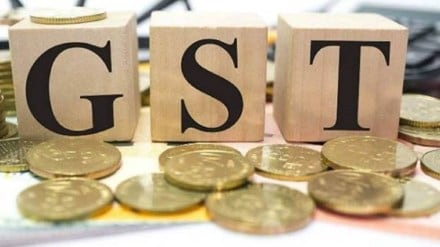The 54th meeting of the GST Council will be held on September 9 in Delhi. Before the Council meeting, officers from states and Centre will meet on September 8. The upcoming GST Council meeting next month is expected to address several key issues, including rate rationalisation, which will cover potential changes to tax slabs and the correction of the inverted duty structure. The Council is also likely to discuss the issuance of notices to companies regarding their overseas operations. Another topic on the agenda is the recent debate over tax rates on insurance premiums.
What is GST?
The Goods and Services Tax (GST) is a comprehensive indirect tax that was implemented in India on July 1, 2017, with the objective of unifying the country’s fragmented tax structure. Before GST, India had a complex system of multiple taxes levied by both the central and state governments, including excise duty, value-added tax (VAT), service tax, and more. This patchwork of taxes created challenges such as tax cascading, where tax was levied on top of tax, and a lack of uniformity in tax administration across states.
The concept of a nationwide GST in India was first proposed by the Kelkar Task Force on Indirect Taxes in 2000. The goal was to replace the complex and fragmented tax system with a unified model that would simplify compliance, reduce tax cascading, and enhance economic integration. The Empowered Committee of State Finance Ministers developed a design and roadmap, releasing the First Discussion Paper in 2009.
The Constitution Amendment Bill was introduced in 2011 but faced hurdles over issues such as state compensation. After extensive negotiations, the Constitution (122nd Amendment) Bill, 2014, was introduced in Parliament. The bill, which aimed to amend the Constitution to facilitate GST implementation, passed the Lok Sabha in May 2015 and the Rajya Sabha, with amendments, in August 2016, and ratified by more than 15 states. After receiving presidential assent from (late) Pranab Mukherjee on September 8, 2016, the GST Council was notified on September 15, 2016, and the GST Council Secretariat was established to assist it. GST came into effect in 2017.
What is GST Council?
The GST Council, an apex body consisting of the Union Finance Minister and state finance ministers, is responsible for setting GST rates, rules, and procedures. This council ensures a cooperative federal approach to taxation, addressing the concerns of both central and state governments.
Key Features and Structure of GST
–One Nation, One Tax: GST replaced multiple indirect taxes levied by the Central and State Governments, such as excise duty, service tax, value-added tax (VAT), and others. It brought uniformity in the tax structure across India, eliminating the cascading effect of taxes.
–Input tax credit: GST is designed as a value-added tax that is levied at each stage of the supply chain. Its core feature is the ability to claim input tax credits, which helps avoid the cascading effect of taxes. This means that businesses can claim credit for the tax paid on inputs, which reduces the overall tax burden on consumers.
–Dual tax structure: India’s GST framework operates on a dual tax structure, comprising Central GST (CGST) and State GST (SGST) for intra-state transactions. For inter-state transactions, Integrated GST (IGST) is applied. This dual approach ensures that both central and state governments receive their fair share of tax revenue.
-Four-tier tax structure: The GST system features a four-tier tax rate structure: 5%, 12%, 18%, and 28%. Essential goods and services are taxed at lower rates, while luxury and non-essential items face higher rates. Some essential commodities are exempted from GST, gold and job work for diamond attract low rate of taxation. Compensation cess is being levied on demerit goods and certain luxury items.
Implementation and Challenges
Since its launch, GST has undergone several updates to address various issues and improve its effectiveness. Initially, the system faced challenges such as technical glitches on the GST Network (GSTN) and compliance difficulties among businesses. The government has made efforts to simplify the process by introducing measures such as e-invoicing, the GST composition scheme for small businesses, and regular updates to tax rates and rules.
Despite these efforts, GST has faced criticisms related to its complexity and frequent changes. Small and medium enterprises, in particular, have struggled with compliance due to the detailed documentation and reporting requirements. The government continues to work on reforms to streamline the system, including reducing compliance burdens and enhancing technological infrastructure.
What’s on the agenda for the 54th GST meet?
Ahead of the GST Council meeting on September 9, the Group of Ministers (GoM) on GST rate rationalisation will meet in Delhi on Thursday. The Council is also expected to review GST on imports of services by Indian entities from overseas branches. The Council may also address health insurance taxation, including a proposal to lower the 18% GST on premiums or possibly exempt these services from the tax. However, the contentious 28% GST on the online gaming industry, set for review six months after its October 2023 enforcement, may not be on the agenda, sources familiar with the matter told Financial Express.
